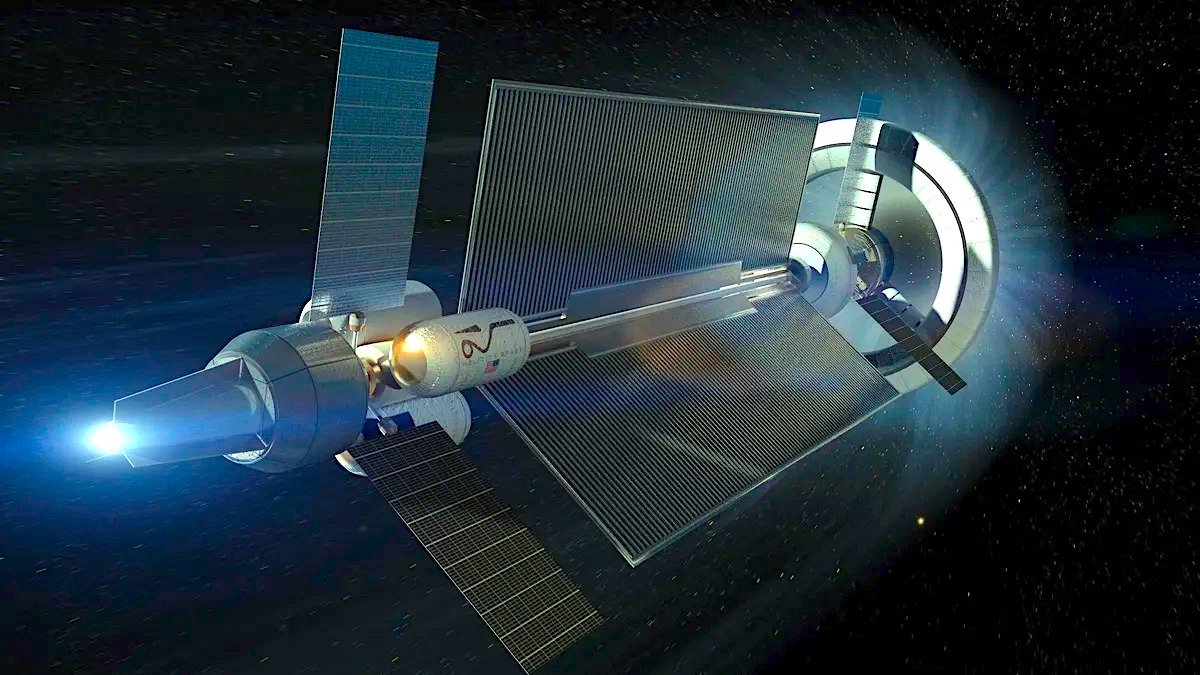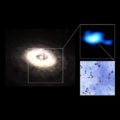Helicity Space, a startup founded in 2018, is developing a fusion drive poised to transform space travel. With a fresh round of investment, the company is developing a proof-of-concept for a fusion-powered propulsion system that can get from Earth to Mars in two months.
In a recent press release, the space-based startup recently secured $5 million in seed funding from Airbus Ventures, TRE Ventures, Voyager Space Holdings, E2MC Space, Urania Ventures, and Gaingels.
Unlike traditional rockets that rely on chemical reactions, Helicity’s fusion drive operates on a magneto-inertial fusion method. This involves fusing two hydrogen isotopes into helium, releasing immense energy – ten million times more per unit mass than chemical fuels.
According to Helicity, the core technology behind their fusion drive efficiently converts electricity into plasma heating, using a unique approach to scale fusion conditions and directly produce thrust. Their method, distinct from conventional magnetic or inertial (laser) fusion, employs self-organized Taylor relaxation and magnetic reconnection physics, combined with a peristaltic magnetic compression scheme.
In very simple terms, the engine uses hot ionized plasma gas heated by magnetic fields that are constantly forced together to the point where they must then break apart. It is this seesaw of magnetic forces that generates vast amounts of energy, heating the plasma to the point where fusion occurs, forcing the nuclei so close that they overcome their electrostatic repulsion and fuse together. To simplify this even more, the energy created by that fusion is aimed out of the tailpipe of the Helicity Drive, and you generate a helluva lot of thrust.
So much so that it cuts the current seven or eight-month trip to Mars down to two, or the six-year trip to Jupiter down to just one.
One of the key advantages of Helicity’s fusion drive is its fuel and propellant efficiency. It enables faster travel over interplanetary distances, with less exposure to space radiation and the agility to alter trajectories or abort missions if necessary. The Helicity Drive creates short bursts of fusion conditions in a design optimized for propulsive plasma exhaust, thus providing acceleration with each pulse. You proverbially slam on the gas pedal, accelerate, and then take your foot off the gas letting momentum do the work. This propulsion method can be deployed before achieving continuous power generation, significantly advancing the feasibility of fusion propulsion in space.
Helicity’s efforts are part of a larger movement to leverage fusion technology in space exploration. Fusion power, unlike fission, merges atoms together, releasing vast energy amounts with safer byproducts. This contrasts starkly with fission’s splitting of atoms, which leads to radiation issues and the complex disposal of irradiated waste. Helicity’s fusion engines use multiple magnetically-controlled, super-heated plasma jets to propel spacecraft, marking a substantial shift from conventional rocket technology, which requires large amounts of super-cold or highly explosive fuel.
“Fusion propulsion can contribute to Earth’s environmental goals indirectly by enabling offworld mining and industry, reducing terrestrial resource consumption and ecological impact,” explained Helicity co-founder Dr. Setthivoine You in an interview. “Ultimately, we see our technology playing a significant role in both space exploration and Earth’s sustainable future.”
The company’s vision extends to catalyzing humanity’s spacefaring ambitions, boosting both human and robotic exploration, and possibly leading to ventures like asteroid mining. The technology’s scalability and practical use in space, even before establishing self-sustaining reactors, demonstrate its potential for early testing and gradual scaling up.
Helicity Space collaborates with top scientific institutes globally, including the California Institute of Technology and the University of Tokyo. Supported by entities like the U.S. Department of Energy’s Innovation Network for Fusion Energy, these partnerships underscore the scientific community’s interest in and support for Helicity’s groundbreaking work.
“We’re currently focused on proving the technology for space propulsion. Once we achieve this, we anticipate drawing more substantial interest and investment, including from energy companies, for broader applications,” said Dr. You.
While building a working fusion drive will require more than their current $5 million dollar investment, the fact that there was funding clearly shows there is a hard push for novel space technology. While still in development, the potential applications of this technology in enhancing human and robotic space exploration are immense.
MJ Banias is a journalist who covers security and technology. He is the host of The Debrief Weekly Report. You can email MJ at mj@thedebrief.org or follow him on Twitter @mjbanias.

